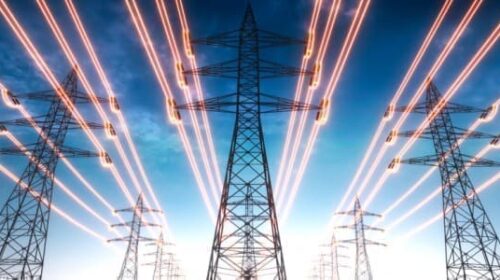Rapid population growth and a minimally progressing economy have been widening the gap between demand and production of electricity day-by-day in Pakistan.
Pakistan is ranked 34th in electricity consumption in the CIA World Factbook. While demand for energy has been increasing steadily, energy production is not growing at the same pace. As a result, Pakistan has been experiencing a persistent energy crisis.
To bridge the gap between demand and supply, the authorities must venture out of their comfort zone and realise that the future of energy will not be as easy as it was in the past. With each passing year, we are moving towards unsustainability in the power sector and a weaker economy as well.
A well-coordinated national energy policy is required to achieve the sustainable development goals set for the country.
While demand for energy, food, clean water and infrastructure rises, our institutions have shown no visible signs of forward planning to meet these demands.
It is expected that the global oil demand will rise by 3.1 million barrels per day (bpd), an Organization of the Petroleum Exporting Countries (OPEC) report predicted.
To strengthen our sagging economy, shifting from fossil fuels to renewables is no longer an option, it is imperative. This readjustment will also change the composition of our imports and reduce our import bills.
Over 60% of total power generation is based on coal-fired thermal power plants, natural gas, LNG and liquid petroleum. These plants have a greater per unit (kWh) cost of electricity while the import of furnace oil puts a very heavy burden on the national exchequer, resulting in high-power tariffs.
All export-oriented industries, either Large Scale Manufacturing (LSM) or small ones, often protest about low exports but none of the governments, in the past or the present, have ever attempted to eliminate the reasons behind this serious issue.
The global markets are becoming more competitive on a daily basis, and in order to deal with this we need to supply very high-quality goods at lower costs than others. To produce a quality product at a cheaper price, it is necessary to provide uninterrupted and cheap electricity to our industries so that they can achieve market competitiveness.
According to the Planning Commission of Pakistan, 50.9% of the overall energy generation mix runs on imported fuels, while the remaining 49.1% is based on indigenous resources. Pakistan has cheaper sources of electricity that include hydel, nuclear, wind, solar and biomass. If the energy generation mix shifts to indigenous and cheap domestic resources, we will not only save a great amount of Forex but will also be able to ensure a sustainable energy production system.
Currently, Pakistan’s total installed capacity has reached 41,557MW. Clean energy has a share of almost 41.02% (17,047MW) in power generation, which comprises 1.4% share of solar, 4.8% of wind, 1.32% of baggage, 8.8% of nuclear and 24.7% of hydel energy.
Owing to higher costs and heavy dependence on fossil fuels, Pakistan’s power production capacity has remained restricted. Pakistan’s transmission and distribution capacity also stands at only 22000MW against the required 26000MW of energy with a loss of 17389 GWh.
To reduce the difference between demand and supply, the government needs to first upgrade the existing transmission and distribution systems, and then enhance the system’s capacity to at least the required demand of electricity, which is over 26000MW.
Recently, in a meeting by Prime Minister Shehbaz Sharif, the government decided to generate electricity via solar panels and directed the relevant departments to initiate work on an emergency basis. With the natural flow of water, Pakistan can generate an additional 6000 MW from hydel power. Once complete, these projects could prove to be very beneficial economically and environmentally.
To provide a conducive environment for quality production across the country, the government will need declare an emergency, for a year or two at the least, to boost transmission and distribution capacity.
We have accrued huge losses in the shape of low and costly industrial yields, resulting in fewer exports and a rising trade deficit.
In March 2018, after the expiry of the 2006 Renewable Energy (RE) Policy, the government had presented a new Alternative and Renewable Energy (ARE) Policy 2019 but was unable to get it approved from the Council of Common Interests (CCI) because of reservations shown by the province of Sindh. After a series of meetings held by the CCI, ARE Policy 2019 was approved unanimously by the body on August 6, 2020. In this policy, the government targeted increasing the share of renewables by 20% and 30% in the total energy mix by 2025 and 2030, respectively.
Past experiences, however, suggest that setting targets in Pakistan may not mean necessarily mean progress. Even if things are implemented in the letter and spirit of the policy, we will be back to square one until low per unit cost is ensured and our transmission problems are resolved.







